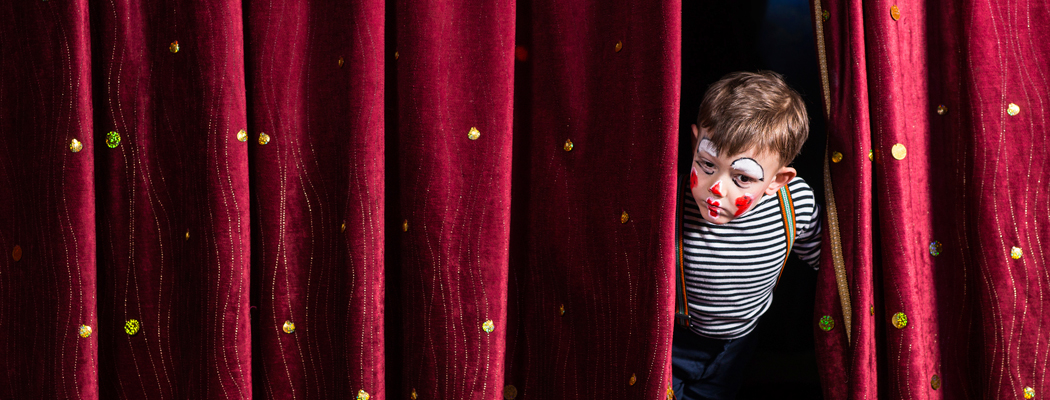“I think I made three mistakes…or maybe four”, a young girl informs her mum as she returns to the waiting area. The exam is over and both look relieved. As any parent supporting a child in their musical endeavours knows, these milestones are a family affair with weeks, months, sometimes years of preparation, careful guidance from teachers and lots of discussions regarding practice. Teachers know that performance opportunities are extremely important, and have all seen how amazingly an approaching exam date can focus a student into action. Eisteddfods and competitions, by way of inclusion of an audience, add a further dimension. And then there’s the nerves, “What if something goes wrong? What if I forget? What if I make too many mistakes?”.
There is a problem with exams, eisteddfods and competitions, but it is not in these things themselves, but rather the way they are often approached by the music education community at large. Too often, the goal for the performance is to be “mistake-free” (at least, in the student’s mind), leaving little room to explore what it means to meaningfully communicate and connect with an audience, even if that audience is a single examiner. Many go as far as speaking as if these two aspects of performance are mutually exclusive – but of course, a successful performance relies on both.
So what’s my point, I hear you ask?
“Eliminating errors from a performance isn’t the end game”
That students understand from very early on that eliminating errors from a performance isn’t the end game. When I think back to my tertiary studies, I remember the epiphany visually in my head; it’s as if I’d previously had a bar graph in my brain as a child whereby technical mastery occupied the first 95% of the goal, leaving the final 5% to “add feeling”. This wasn’t my invention, it was the sum of my experiences in music lessons, conversations and observations at competitions and eisteddfods. The proportions of this graph transformed throughout my university performance studies, where technical mastery ultimately shifted to sit around 30%. To be clear, this percentage isn’t a representation of how much I valued technical mastery — quite the contrary. Technical mastery became a given — a requirement for me to be able to explore and to learn how to communicate what the music, and I, had to offer. Practice transformed from being an extended process of scrubbing away mistakes to one that was designed to create a muscle memory of a very tactile, accurate representation of the piece as early on as possible — one that would ideally allow me to almost “conduct” the music in performance, as opposed to ferociously obsess about making it through to the final chord unscathed.
How do we teach this to the youngest of students?
Have you ever asked a child about their favourite music to listen to, and their favourite artists? You may find you have to extract the information with some perseverance to account for the often seemingly vast divide between the music they listen to, and what’s on the page in front of them (but that’s perhaps a topic for another time). Ask them if the reason they like listening to recordings of that particular music is because it has no mistakes and they’ll probably look at you bemused. Ask them if they’ve ever seen any of their favourite artists perform live, and, if they have, whether they were concerned about the artist making a mistake? They’ll most likely be surprised, or even laugh. Better still, ask if they have actually seen their favourite artists make ‘mistakes’ when performing live, and whether that spoilt the experience for them. Chances are if they have, they will have enjoyed the concert regardless.
Normalise the “mistake” and watch the weight lift off your students’ shoulders. Educate them about the editing processes that would have been employed in music recordings they listen to. Show them video of live performances that demonstrate even the most brilliant, established performers slip up. Help them understand that mistakes will happen and equip them with the tools to manage this. Think about vocabulary you can introduce to help them more constructively self-evaluate performances: words and phrases that extend them beyond counting the number of errors. Outside of the music, there also exists an opportunity to help these young people be more accepting of themselves, and others, in so many ways.
One of the greatest things my performance teacher at the Conservatorium, Professor Max Cooke, did for me was to conduct my lessons in “groups”. This simply involved having other students sit in on my lessons, while I sat in on theirs. After we got over the initial feelings of self-consciousness, mixed with competitiveness, we reaped many benefits: imperfection was normalised and performing in the company of others became much more comfortable. Any mistakes that cropped up in performance became less about our personal inadequacies on stage, and more about how we could make improvements to the practice process at home.
So, as you embrace exams, eisteddfods and competitions, inspire your students to give a performance that’s truly special — they may be surprised at how much the examiners and adjudicators appreciate it.
I also invite your students to enter the 2016 Piano Select Scholarship: It is a different approach to the traditional piano competition, and is open to students of all ages and levels, Australia-wide. Entry is free. Visit www.pianoselect.com.au
